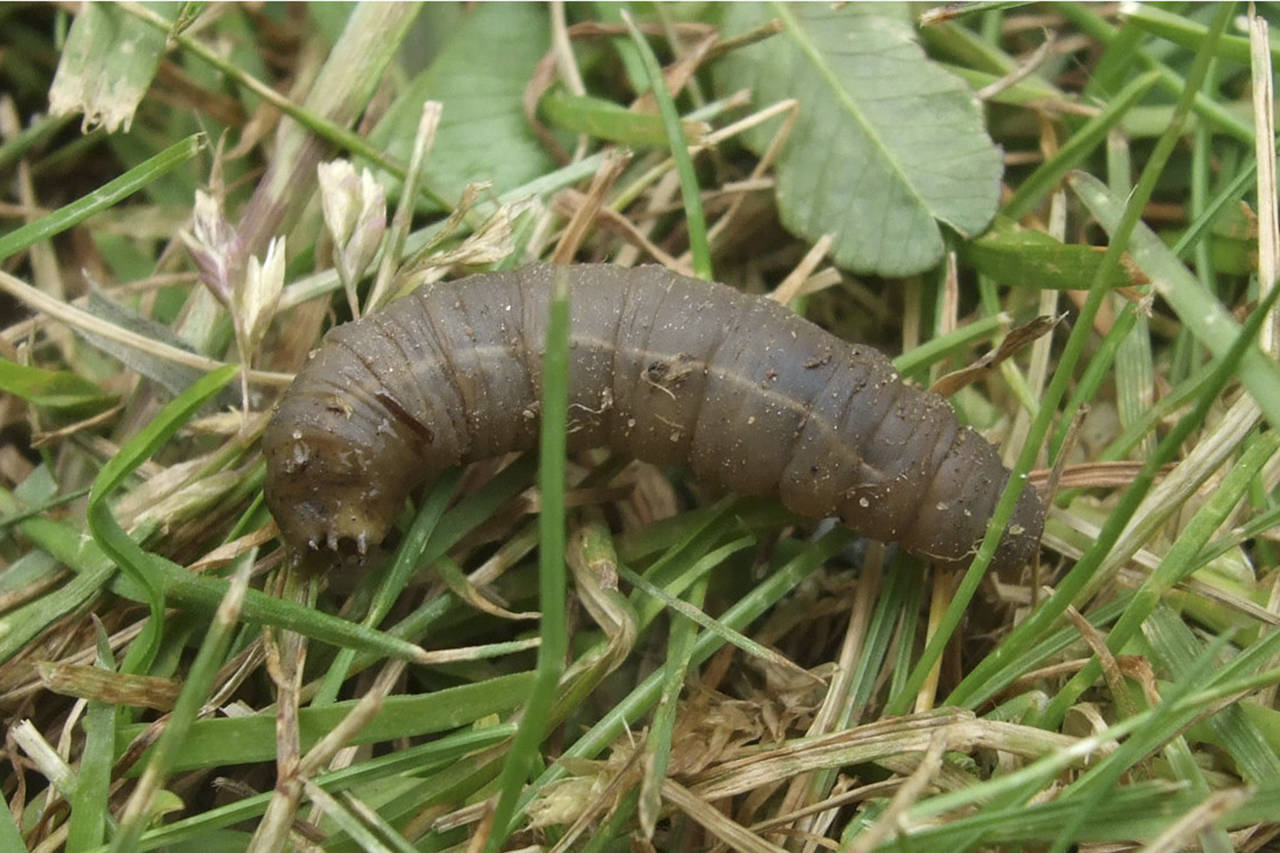By Linda Lee
WSU Master Gardener
There are many kinds of cranefly. In the Pacific Northwest, we have many native species that are beneficial decomposers in streams and forests. However, we do have some exotic craneflies that damage our lawns.
The first Pacific Northwest identification of Tipula paludosa Meigan, known as the European cranefly, was in British Columbia in 1965. Since then it has gradually spread into Washington and parts of Western Oregon.
Commonly known as a “mosquito hawk” or “skeeter eater,” it poses a serious economic threat to lawns, pastures and hayfields. (And they do not feed on mosquitos.)
In 1998, a second, closely related cranefly species from Europe was found here in the Pacific Northwest. The common or marsh cranefly, Tipula oleracea, is almost identical in appearance to the first and has similar biology.
It, too, is considered a serious pest of turf and can complete two generations per year, while the first has only one. Adults emerge in the spring, as well as late summer and fall.
The larvae of craneflies, also known as “leatherjackets,” feed on roots of plants, mainly turf grass. In general appearance, the adults are large with grayish-brownish bodies. Male craneflies may have a wingspan of 1.25 to 1.5 inches, while females are larger with a wingspan of up to 2 inches. One characteristic to separate the species, which only applies to females, is the length of the wings. Female T. oleracea wings are clearly longer than the abdomen, while wings of T. paludosa female are shorter than the abdomen.
A large population can cause damage to lawns. For the average lawn, however, craneflies are rarely a problem. A survey done in by Whatcom County Master Gardeners found that 90 percent of Lake Whatcom watershed residents didn’t have craneflies at all. The rest of the lawns had few craneflies and no problems.
Leatherjacket feeding can cause brown patches in lawns, mainly due to the larvae feeding on grass roots.
To figure out whether you have a cranefly problem, measure out a 6-inch square in the lawn area you believe they are in. Cut out this section with a sharp knife. If you have more than 20 larvae per square foot, you may want to look at some kind of treatment. Most of the time no treatment is required; a vigorous, healthy lawn will recover from the damage on its own.
Usually if you have a large population of starlings and robins in your lawn, they are there to eat the larvae. Raccoons and skunks also dig for grubs and larvae and can be a great deterrent to the cranefly population,but they can also damage your lawn with their digging.
If you determine that you have a heavy infestation, contact the WSU Master Gardener program at pnwmg.org and click on “Ask a Master Gardener” for help.
Linda Lee, of Cosmopolis, has been a WSU Master Gardener for 17 years.


